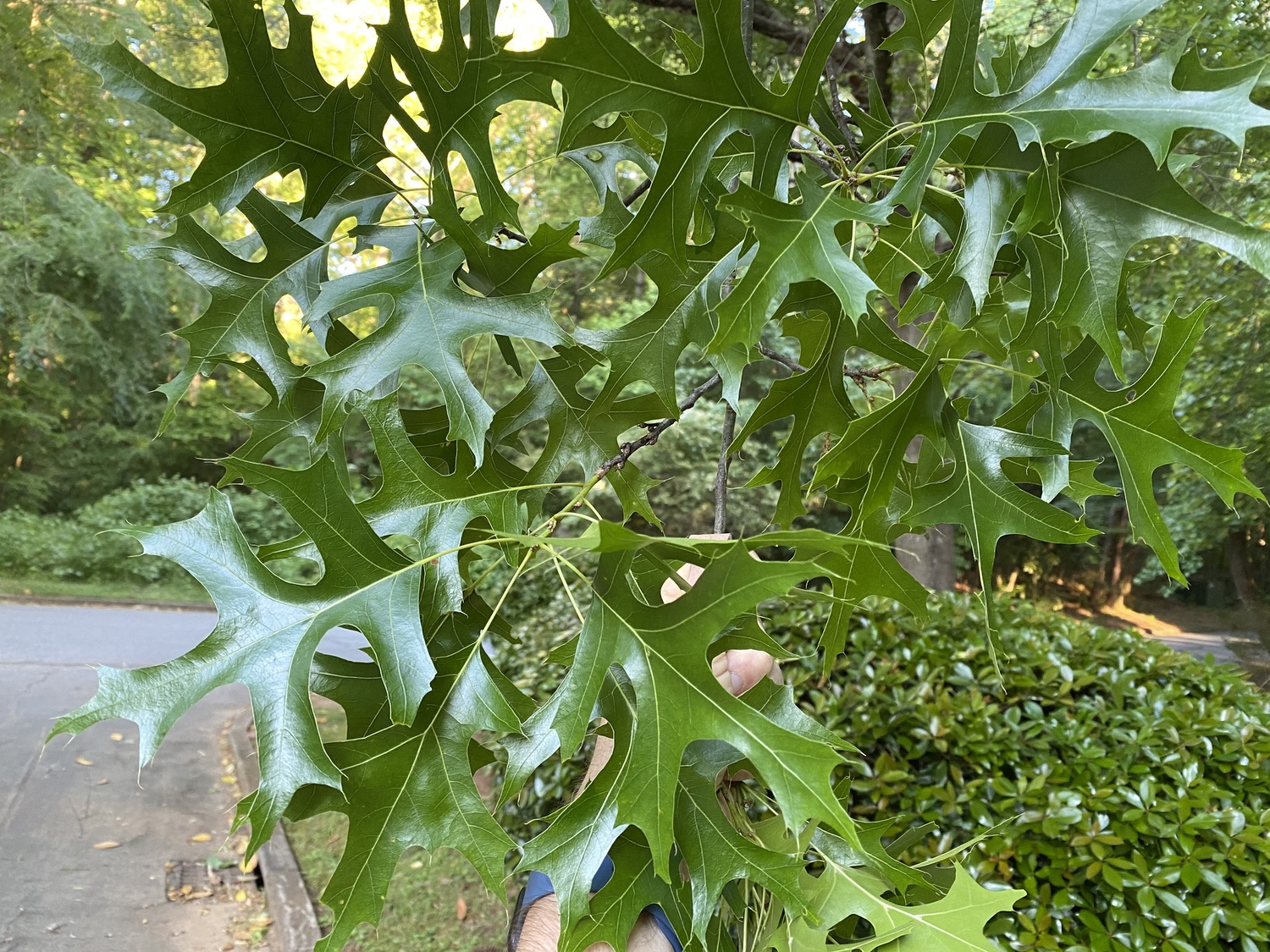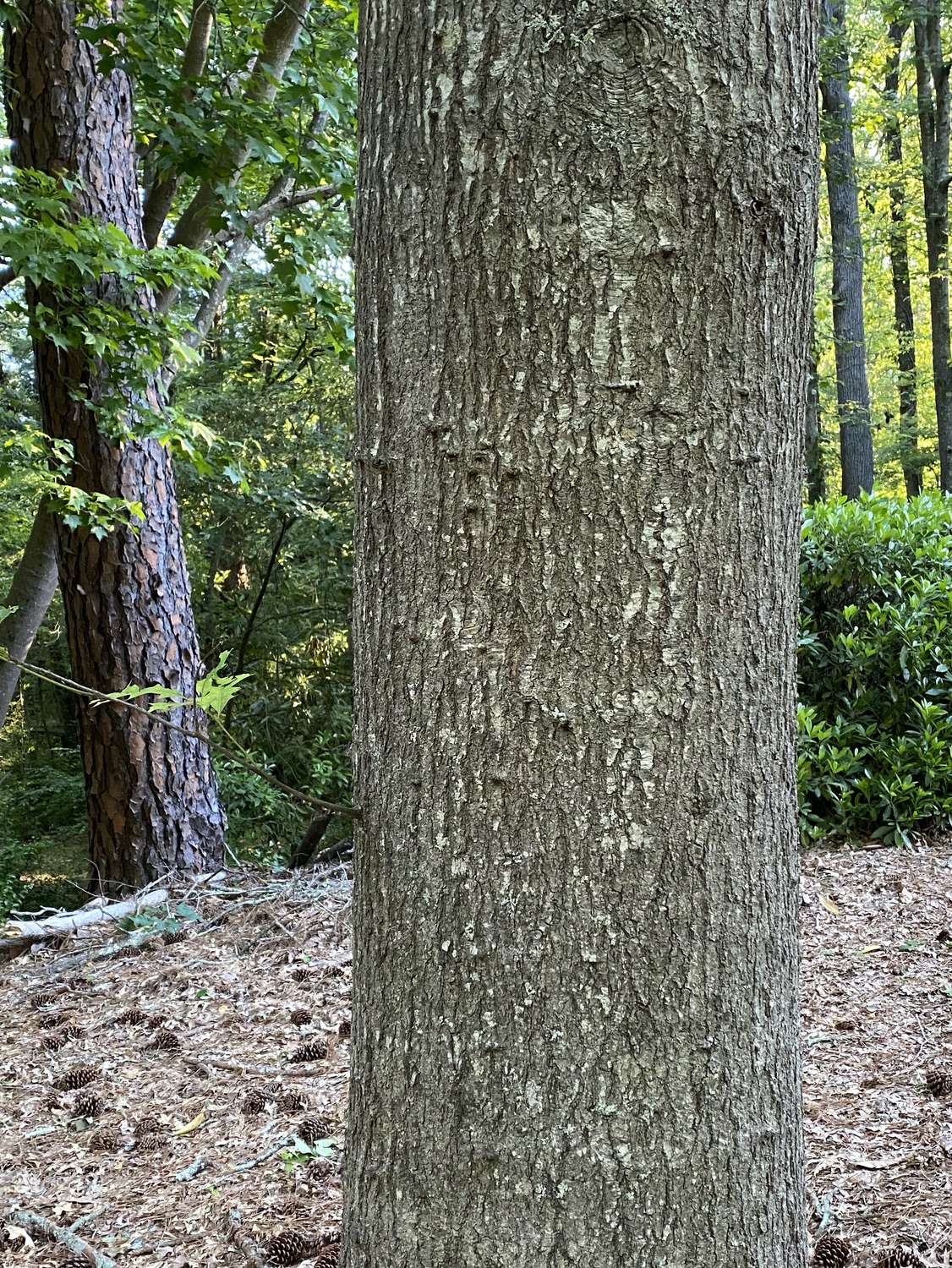TREES OF ATHENS: OAKS
5/24/20
Oaks are abundant and diverse in our neighborhood. Although they are generally divided into two broad groups, the white-oak group and the red-oak group, I divide them here into oaks that have leaves with rounded lobes and those with pointed lobes.
Leaves with rounded lobes
This group consists of two members from the white-oak group (Eastern White Oak, Common Post Oak) and two from the red-oak group (the Water Oak, Willow Oak).
Eastern White Oak (Quercus alba). The leaves are distinctive with their numerous rounded (not pointed) lobes. The bark is also distinctive for its lighter color and especially for its tendency to form long vertical strips that peel off along one edge. This is most easily seen along the sides of the trunk, starting a few feet up from the base of the tree.
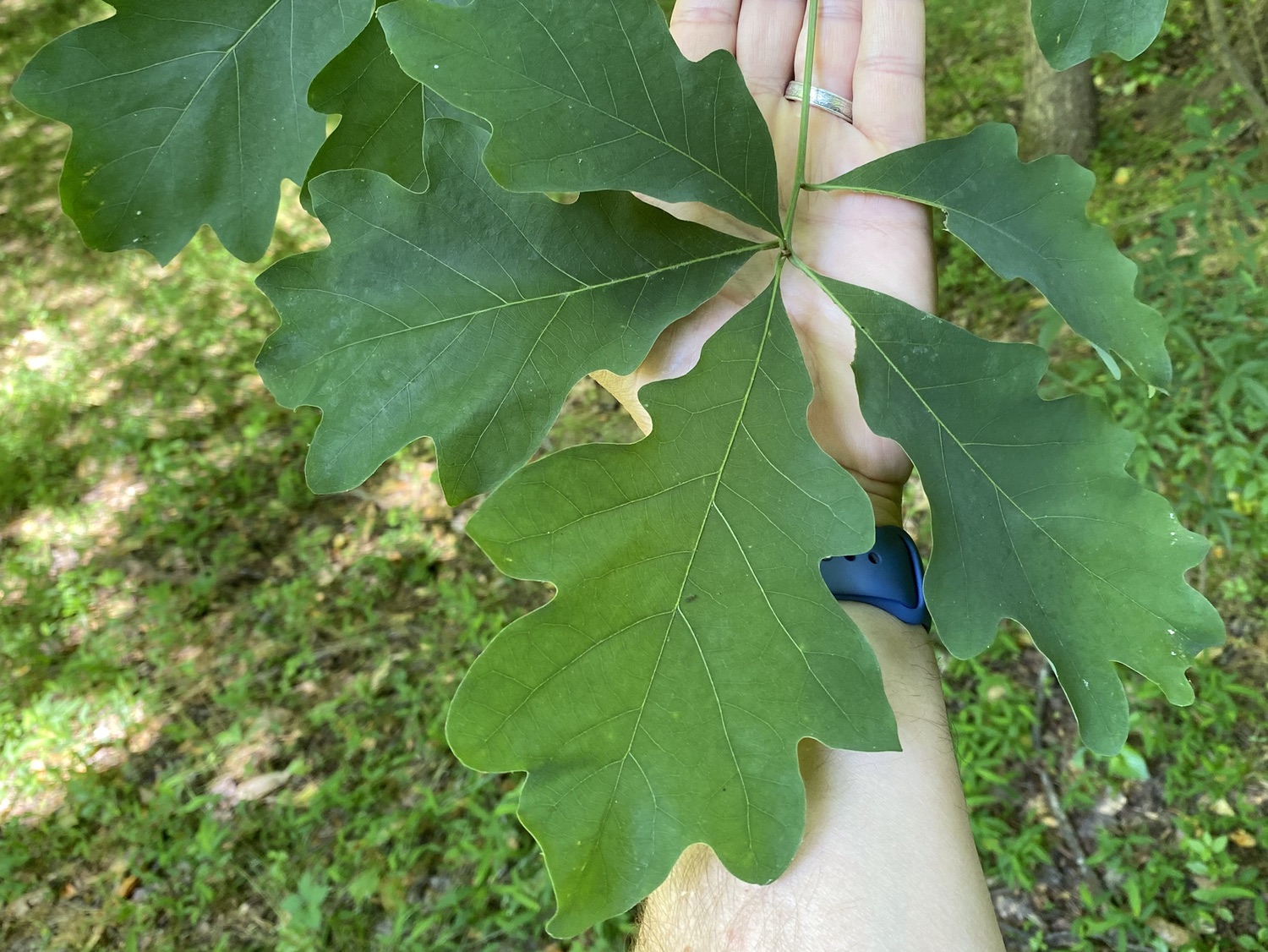
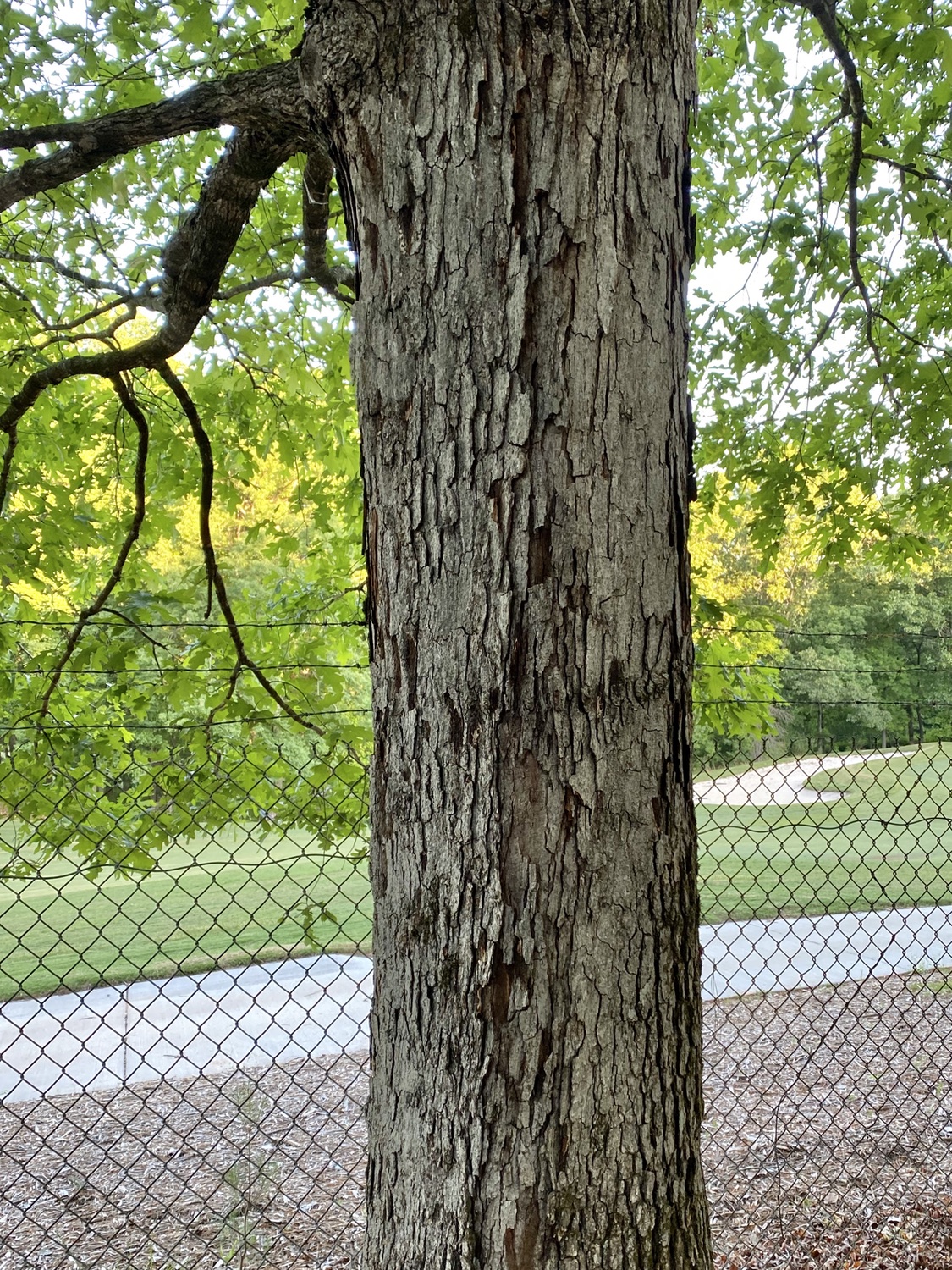
Common Post Oak (Quercus stellata). Leaves are stiff, glossy, and leathery, often with three main lobes and short leafstalk. Side lobes often have parallel sides, giving the leaf a cross-shape. The Common Post Oak is usually a small tree, and is common in dry sites like upland woods.
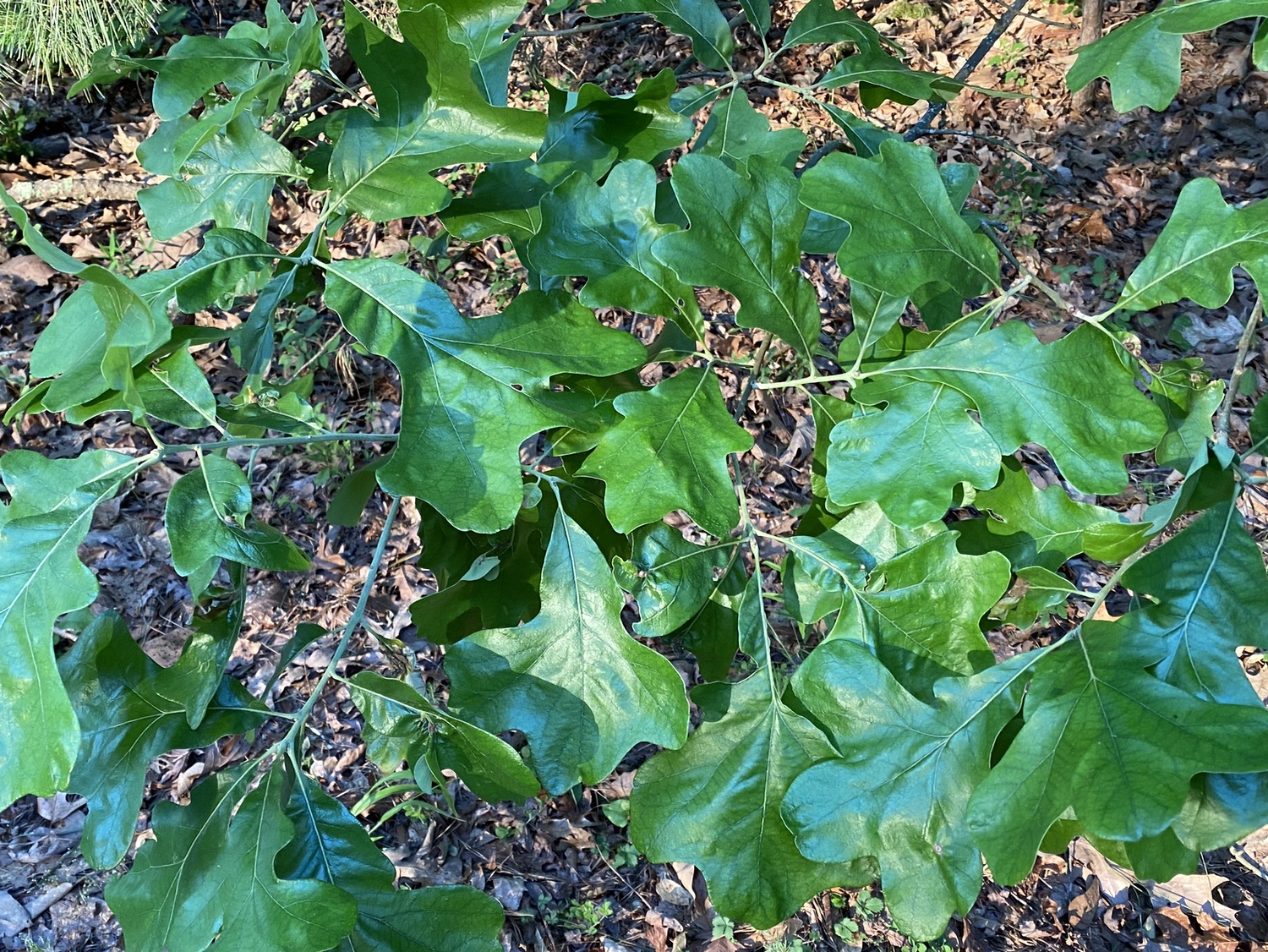
Water Oak (Quercus nigra). Highly variable leaves, but generally with broader tips, generally made by three weakly developed lobes. Individual leaves may look like a Willow Oak, so it is important to look at many leaves.
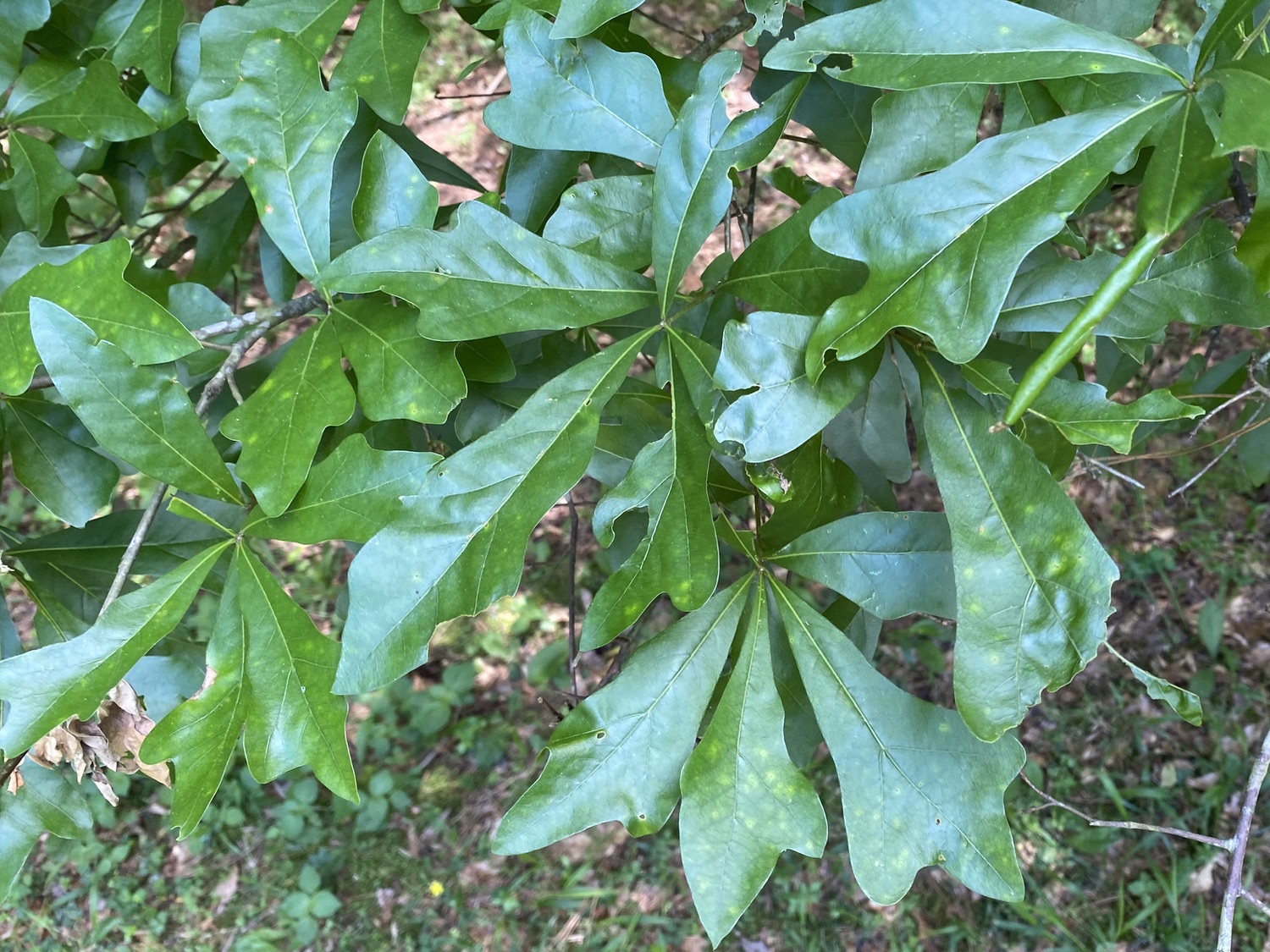
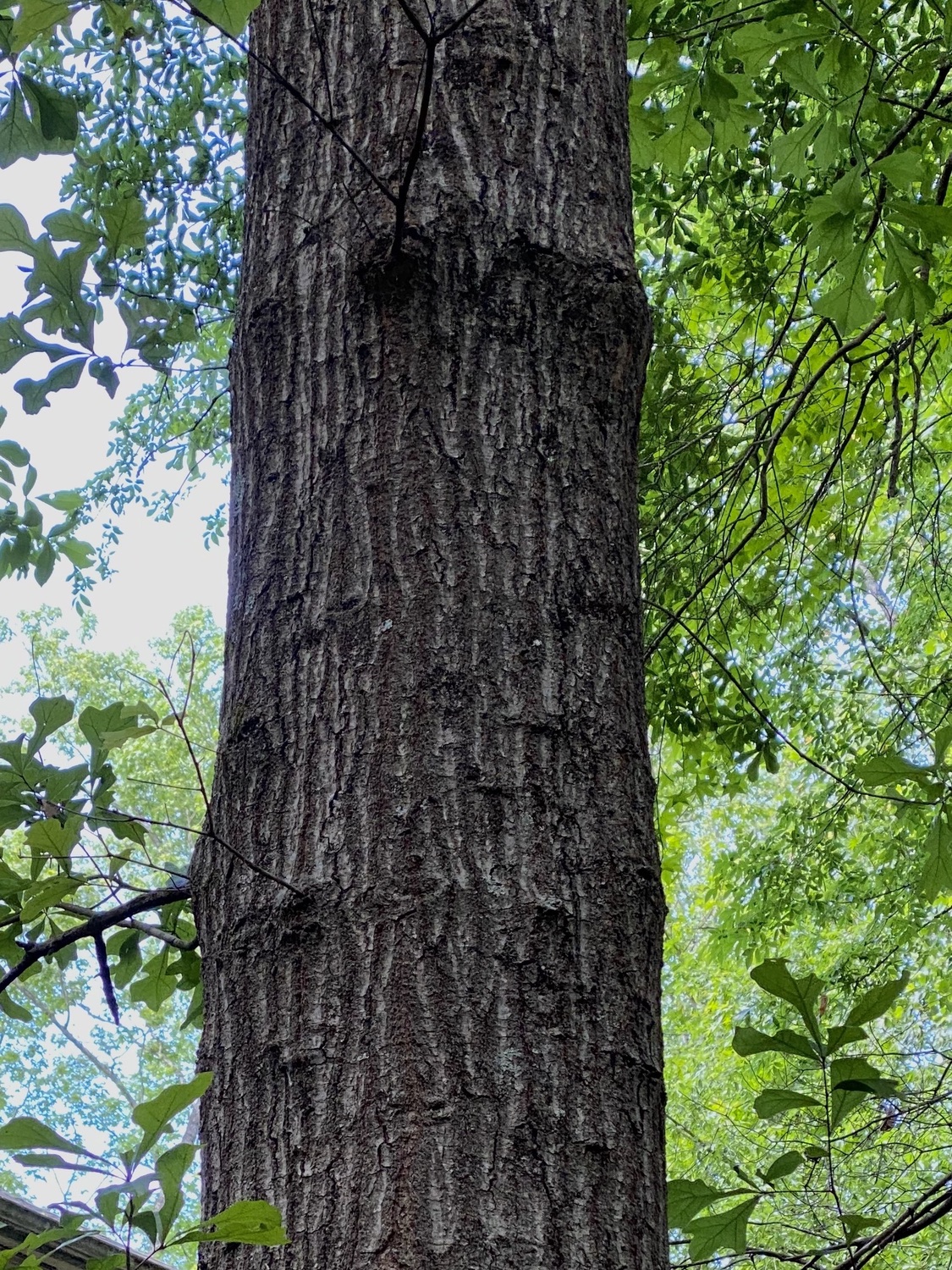
Blackjack Oak (Quercus marilandica). Leaves are leathery and held out stiffly from the tips of twigs. Leaves tend to be broadly expanding, with three lobes. I’ve not found these in the neighborhood, but expect to. I have seen these at the UGA Botanical Gardens, along the white trail in a xeric pine-oak forest, and along the blue trail in association with Willow Oak, Water Oak, and Common Post Oak. Every one I’ve seen has been small, less than 10–15' tall, with a trunk less narrower than my thumb, so I do not have a photo of its bark.
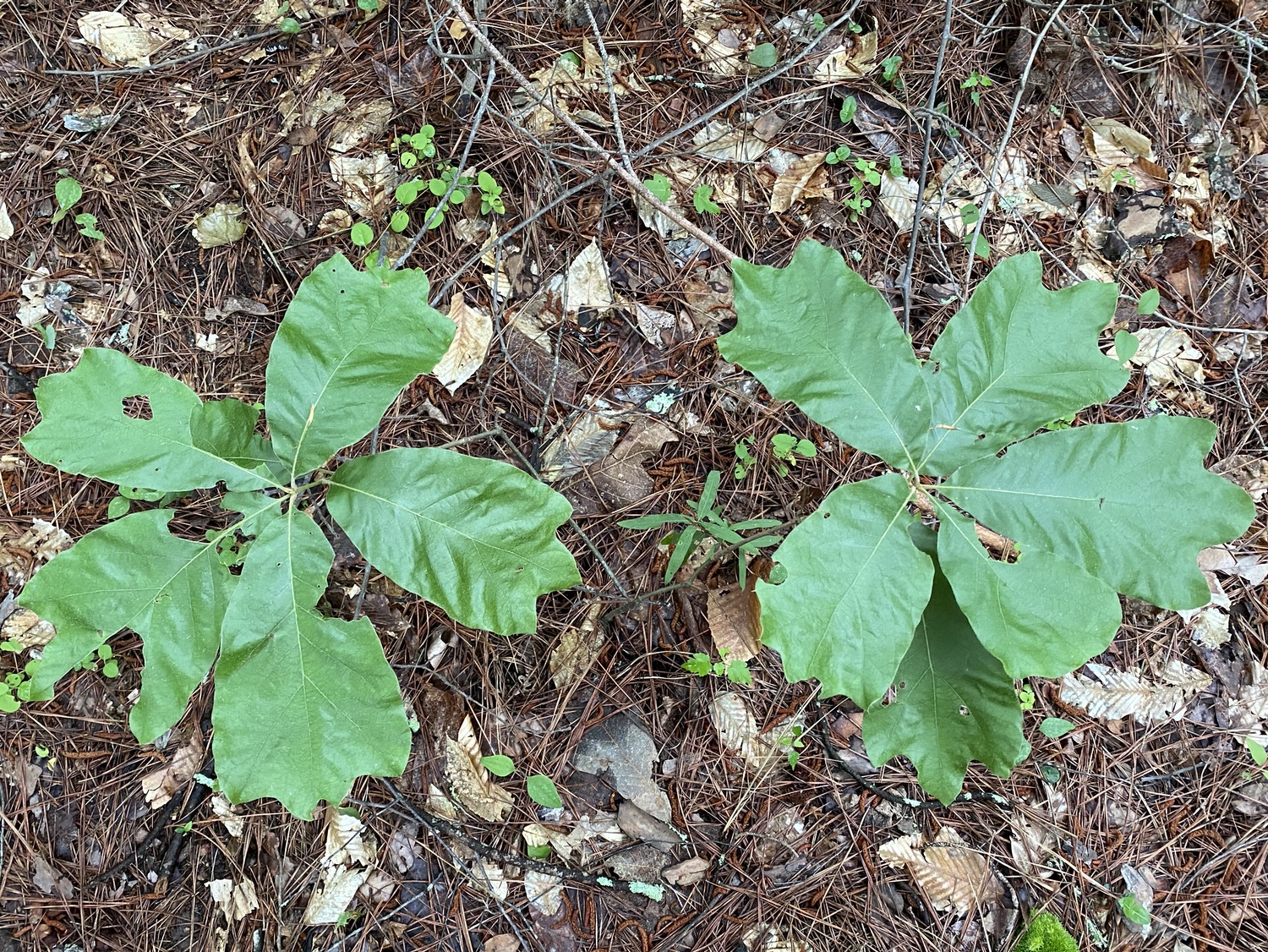
Willow Oak (Quercus phellos). Leaves are about 4" long, narrow and elliptical. Bark is smooth, with vertical ridges and furrows.
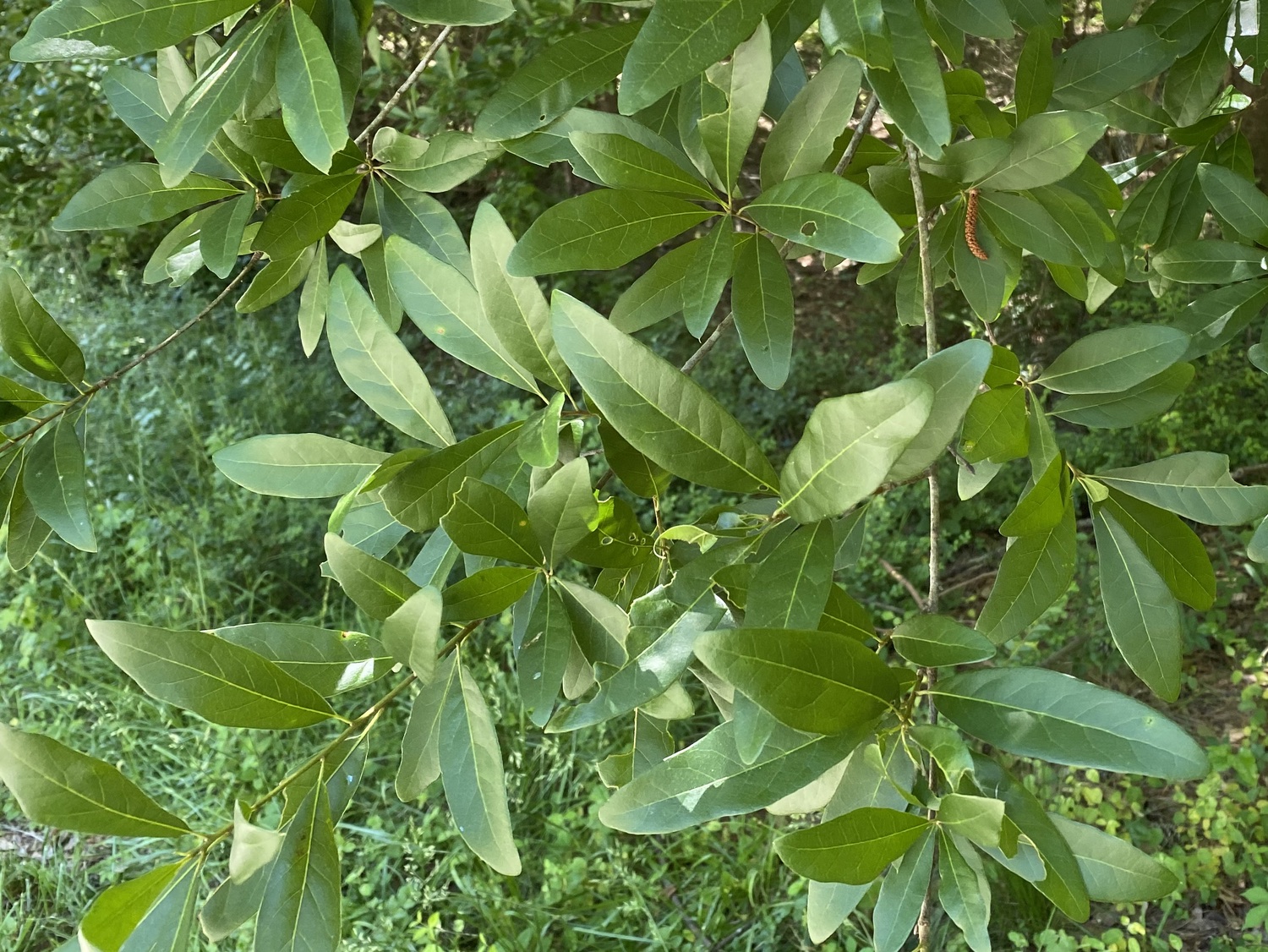
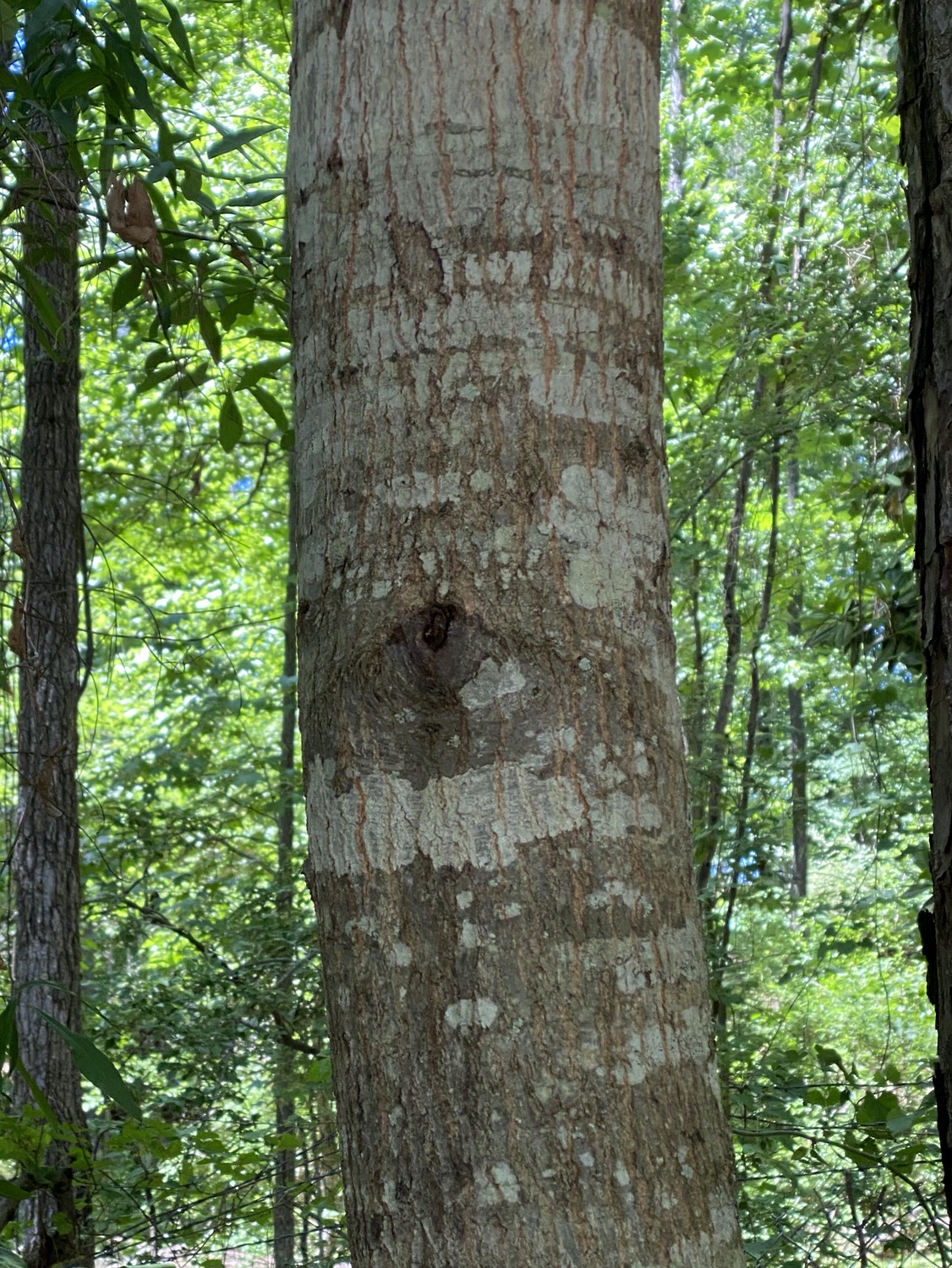
Leaves with pointed lobes
All four members of this group belong to the red-oak group: Northern Red Oak, Southern Red Oak, Eastern Black Oak, and Scarlet Oak. They are distinguished in large part by how deep the lobes on the leaves are, but be aware that this can vary markedly in a single tree, so always get a sense for the variation of leaf shape before making an indentification. Also, hybridization is common, so some trees are just hard to peg. A fifth species, the Shumard Oak is reported from the area; it has highly pointed lobes with numerous bristles.
Northern Red Oak (Quercus falcata). Leaves have pointed lobes, but are not as deeply indented as the Scarlet Oak. Note that the leaf shape changes markedly along the tree, with more deeply embayed leaves near the top. The underside of the leaf is smooth, with tufts of hair where the veins join the midvein (most easily seen with a 10x lens). The bark has a characteristic and striking zebra-stripe pattern of vertical stripes with smooth, light-colored ridges and rough, dark valleys.
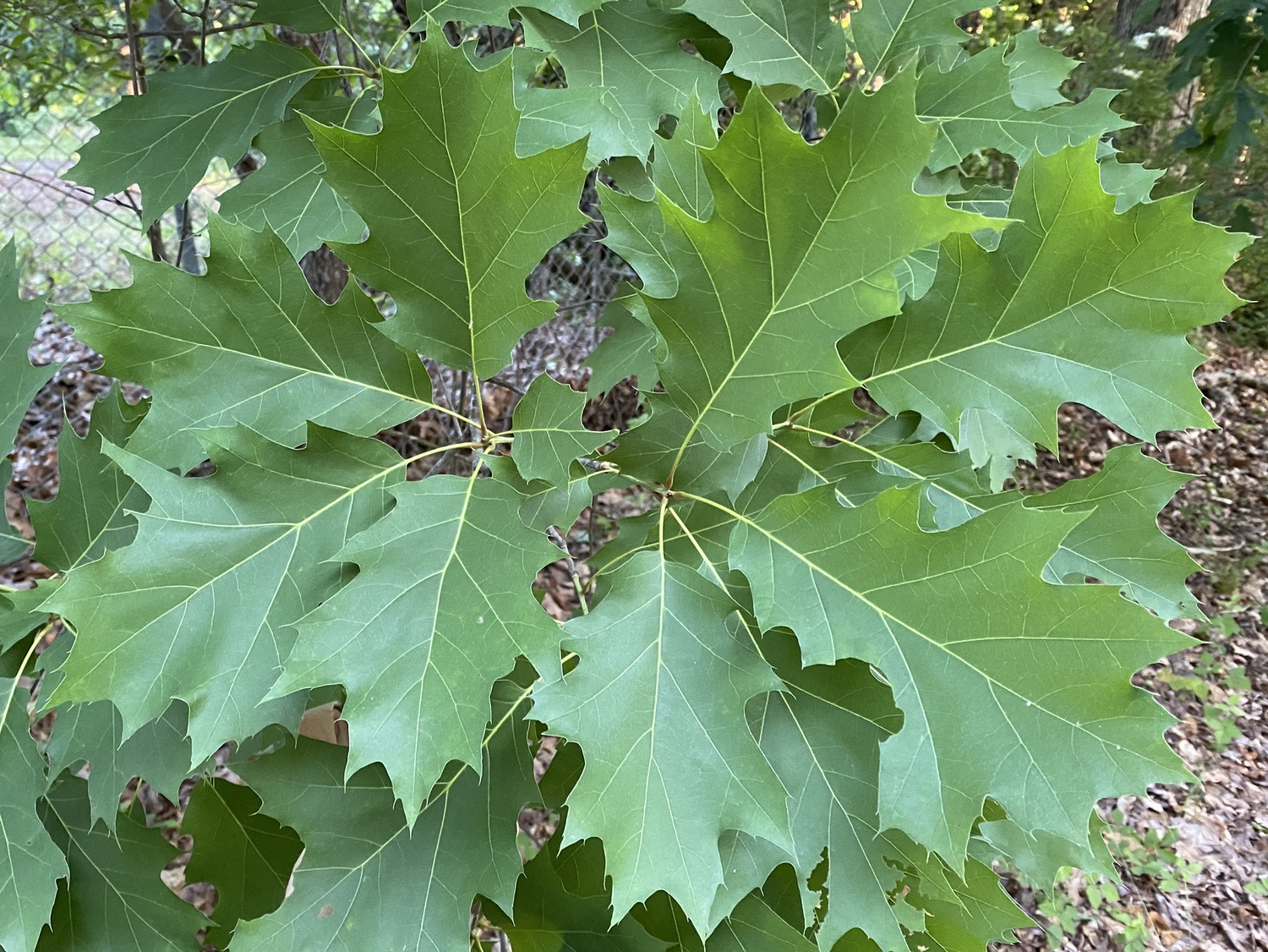
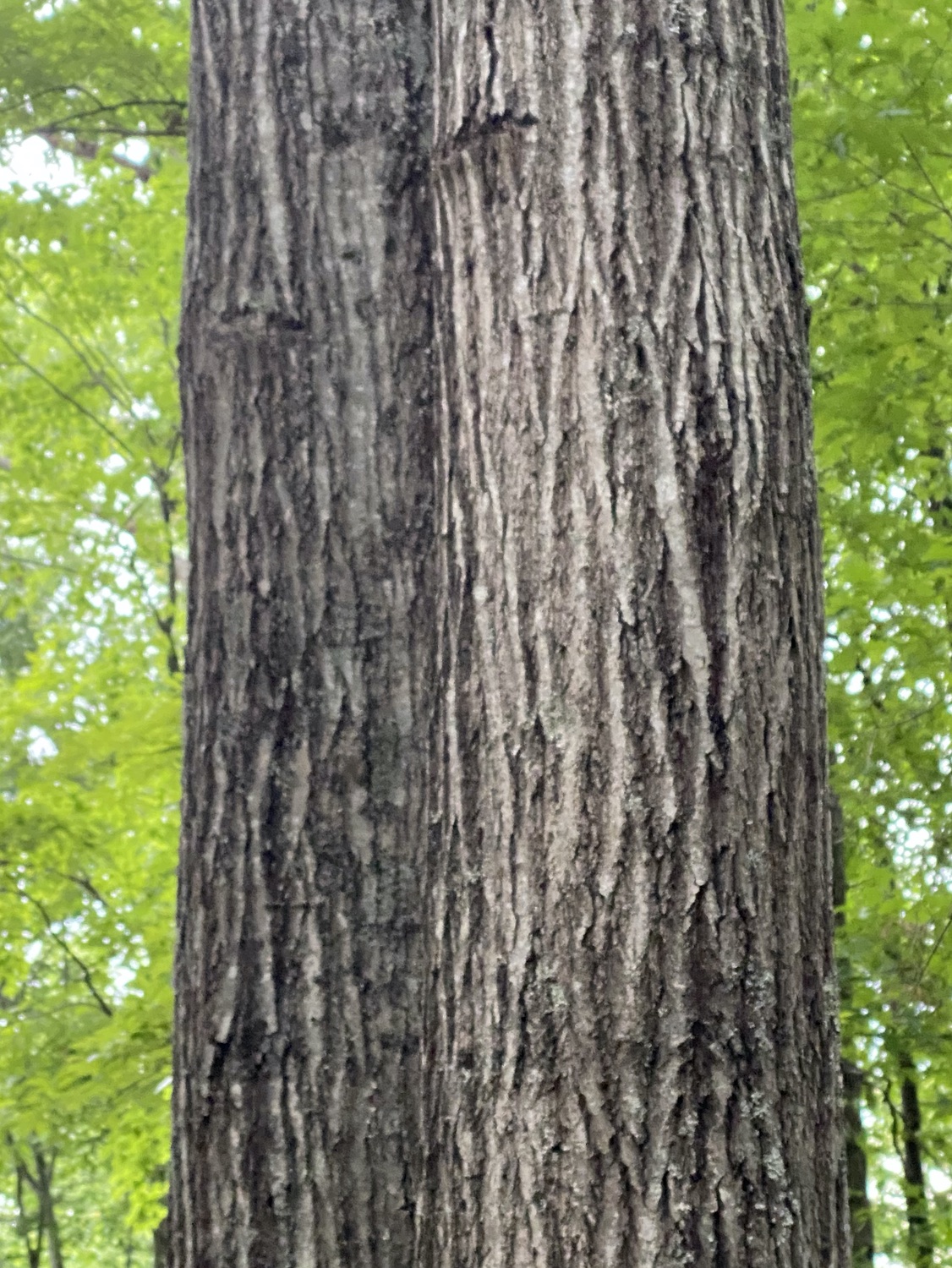
Southern Red Oak (Quercus falcata). Leaves are deeply lobed and have a distinctively U-shaped base.

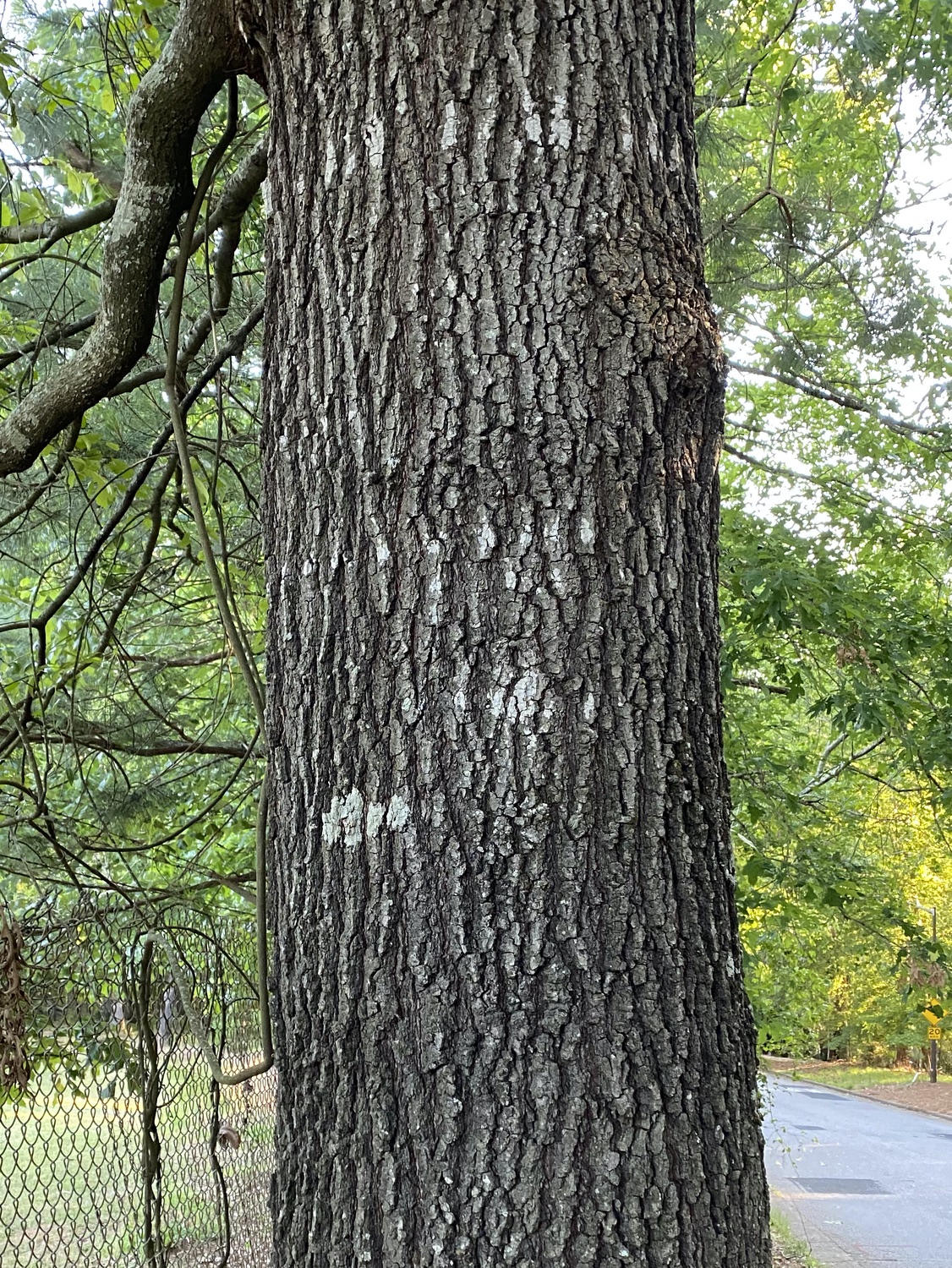
Eastern Black Oak (Quercus velutina). Leaves are similar to Northern Red Oak, and they show considerable variation. The key to Eastern Black Oak leaves is that their undersides are fuzzy, and that small hairs project from all around the sides of the leaf (a 10x lens helps here), whereas the leaves of the Northern Red Oak are smooth. Eastern Black Oak leaves are often darker, larger, and less flexible than those of the Northern Red Oak. Some field guides report that the lobes of the Eastern Black Oak are more pronounced than those of the Northern Red Oak, but I’ve often seen the opposite. The bark tends to break into small blocks, unlike the long dark and light vertical bands on the Northern Red Oak.
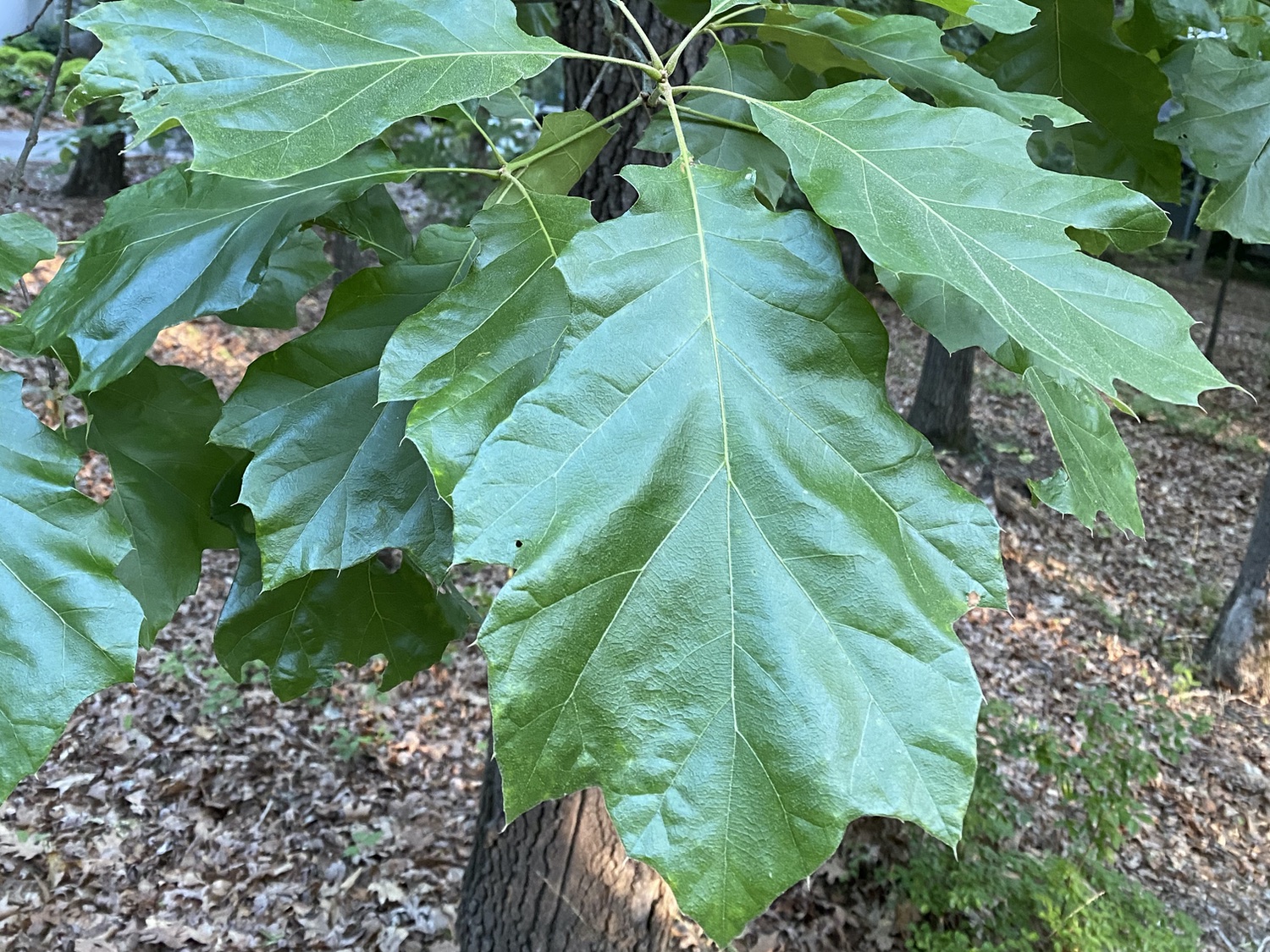
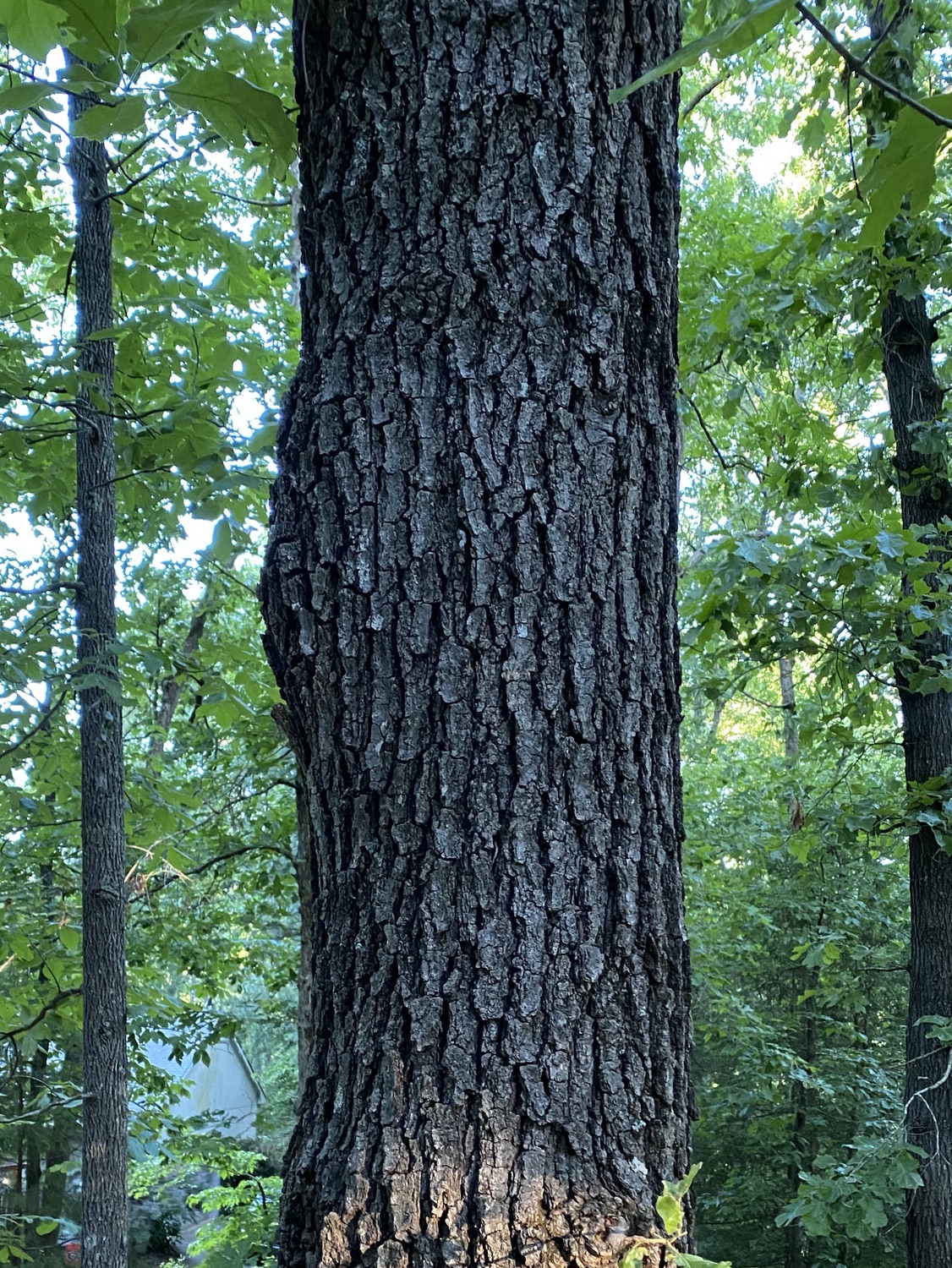
Scarlet Oak (Quercus coccinea). Scarlet Oak leaves are deeply lobed, with indentations almost reaching the midvein; lobe tips are pointed. Watch to be sure that this degree of indentation is consistent on a tree because Northern Red Oak and Eastern Black Oak leaves high in the canopy are often strongly indented, more so than near the ground. The bark of the Scarlet Oak is rougher than that of the Northern Red Oak, and it lacks the continuous vertical ridges.
